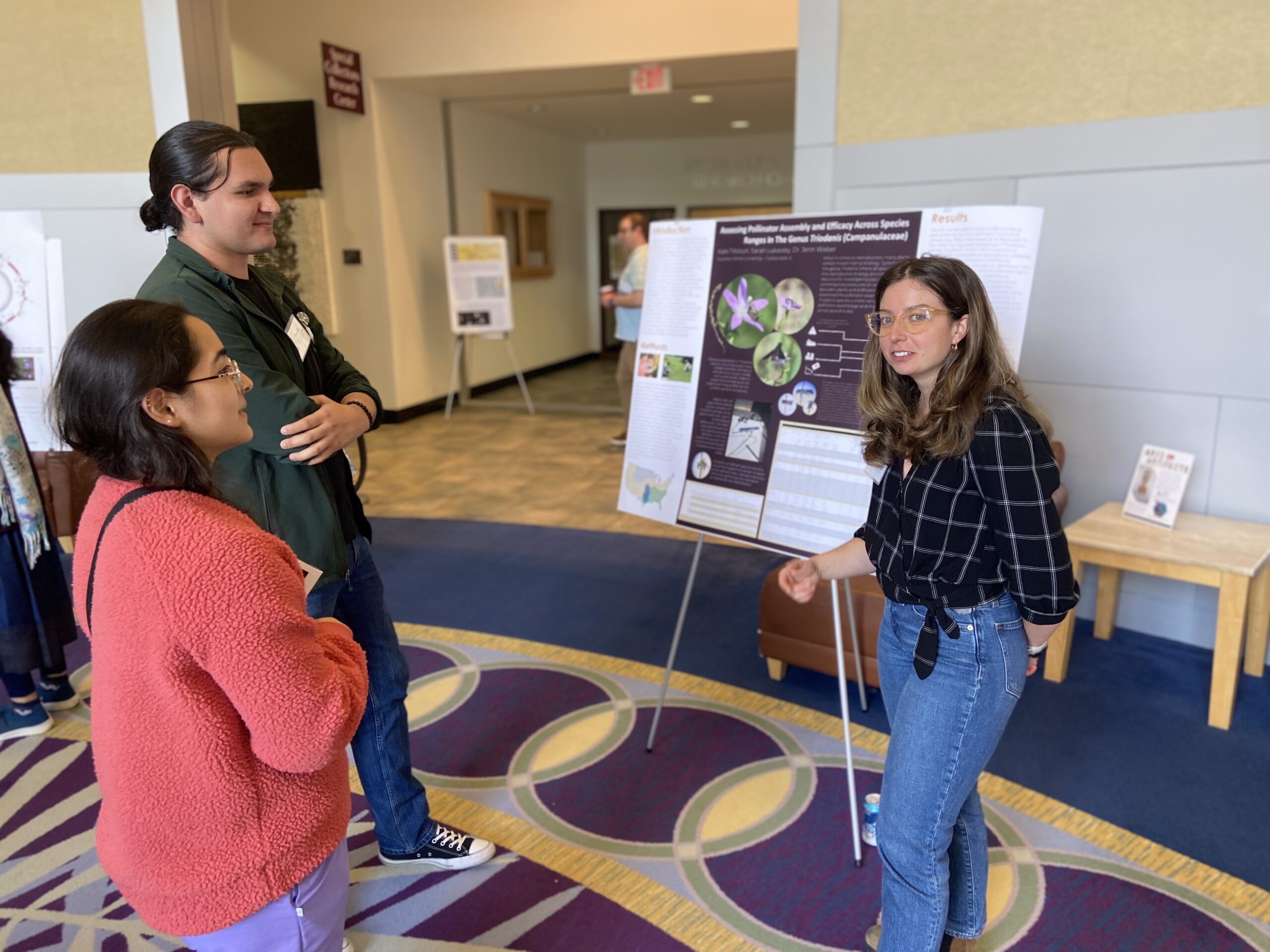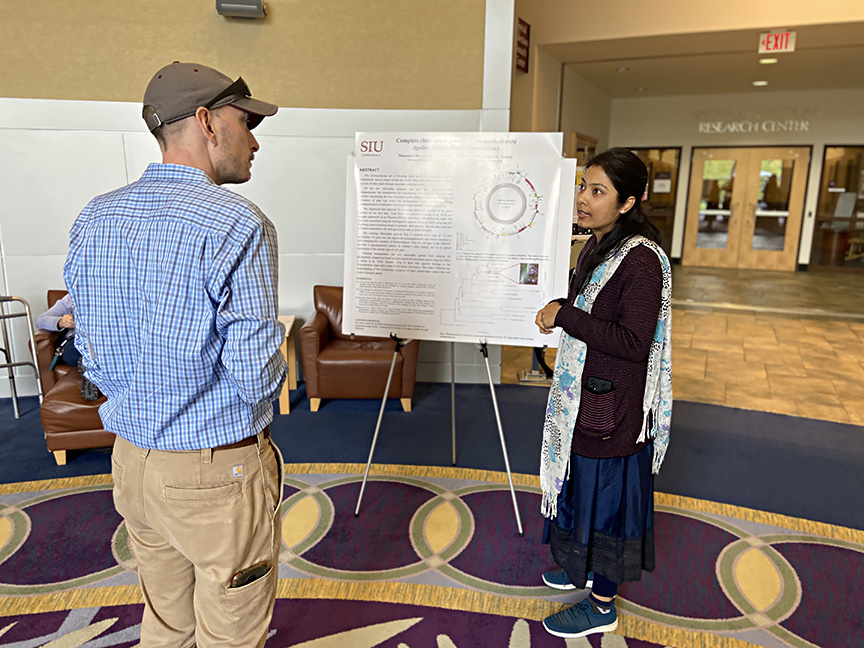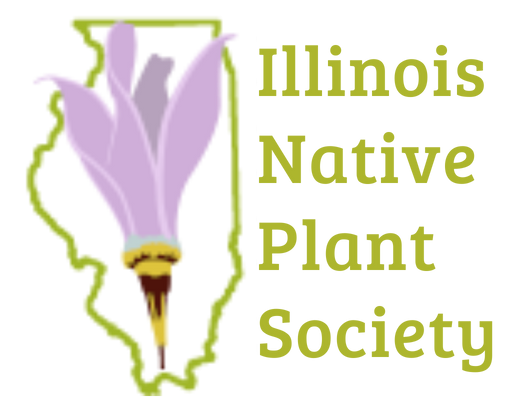2024 Indigenous Plants Symposium

The Southern Chapter of the Illinois Native Plant Society hosts its annual symposium at Southern Illinois University Carbondale. This year’s theme is “Changing landscapes: Plants, People and the Environment.” Our seven speakers will address change in the landscape over small to large spatial and temporal scales. Talks will be a combination of in-person and Zoom presentations.
Hosted by the Southern Chapter of INPS
When: April 20, 2024, 10:30am to 4pm
Where: Old Main Room and Lounge, SIU Student Center (2nd Floor)
1255 Lincoln Drive, Southern Illinois University, Carbondale, IL
For more info: southernillinoisplants@gmail.com

Registration Information
REGISTER: Follow Link to Register for the Symposium
- FULL – $35
- STUDENT PRESENTING POSTER – $20
- STUDENT NOT PRESENTING POSTER – $25
- ZOOM ONLY – $10
- SPONSOR/VENDOR – $100
General Information:
There are no concurrent sessions, so you do not need to select presentations and may attend one or all presentations in-person or through Zoom. (Those opting for Zoom participation will be sent a Zoom link to the email address included in the registration.) We have invited several organizations to set up tables at the Symposium as sponsors or vendors.
We thank you for contributing to our Conservation Fund.
Lunch will be provided as a varied selection of sandwich, fruit and vegetable trays and assorted beverages, so registrants do not need to make a choice when registering. Registrants with specific dietary needs (vegan, vegetarian, gluten-intolerant, etc.) should note these in the “Lunch comment” field so that we order sufficient acceptable lunches.
Schedule of Presentations
Morning
Clarice Esch, USDA Forest Service, Shawnee National Forest, Vienna, Il
Title: Plant-soil interactions and implications for invasions
Andrew Margenot, Crop Sciences, University of Illinois Urbana-Champaign
Title: Changes in the land: understanding how soils of Illinois have been transformed over the past 120+ years using a unique archive
Charles Flower & Kathleen Knight, USDA Forest Service, Northern Research Station, Delaware, OH
Title: Impacts and management of Emerald Ash Borer: from tree level responses to forest dynamics – opportunities for risk management and mitigation
Lunch
Afternoon
Susannah Lerman, USDA FS Northern Research Station, Amherst, Massachusetts
Title: Humanity for Habitat: Saving Nature at Home
Kelsay Shaw, Owner and Botanist, Possibility Place Nursery, Monee IL
Title: How to Transition into a Native Gardening for Friends and Neighbors
Trisha Spanbauer, Department of Environmental Sciences, University of Toledo, and M. Allison Stegner, Department of Biology, Stanford University
Title: Using paleoecology to better understand the impacts anthropogenic changes to North American vegetation
Greg Mueller, Chief Scientist Emeritus, Chicago Botanic Garden
Title: Fungal Conservation – Progress and Challenges
Speakers, Bios, Presentation Summaries
Susannah Lerman, USDA FS Northern Research Station, Amherst, Massachusetts
Title: Humanity for Habitat: Saving Nature at Home
Description: The primary threat to biodiversity is habitat loss and degradation. Private residential properties (“yards”) encompass large proportions of urban, suburban, and rural spaces, and are among the most rapidly expanding systems on earth. Yards also represent a conservation opportunity to provide wildlife habitat, support biodiversity, restore ecosystem function and ecosystem services, and increase local opportunities for people to connect with nature. A “humanity for habitat” stewardship practice aims to inspire and encourage more vigorous participation in conservation actions where people live. I will highlight studies that have direct applications for enhancing wildlife habitat in yards, and describe opportunities, challenges, and strategies for yard stewardship to facilitate biodiversity-friendly residential landscapes that benefit wildlife and people.
Bio: Dr. Susannah Lerman is a Research Ecologist with the USDA Forest Service Northern Research Station. Her research assesses how wildlife respond to different management practices, with a focus on birds and bees, and how people interact with nearby nature. Her research emphasis is on private lands, which provide opportunities for the public to participate in science, conservation, and shared stewardship. Her research also assesses how to ensure equitable access to biodiversity. She mentors a diverse and exceptional group of young and early career scholars.
Greg Mueller, Chief Scientist Emeritus, Chicago Botanic Garden
Title: Fungal Conservation – Progress and Challenges
Description: Fungi are among the most diverse and ecological important group of organisms on earth. They also directly benefit people as food, sources of medicines, etc. Unfortunately, they are not immune to the threats that put species of animals and plants at risk including habitat loss and degradation, invasive species, loss of symbiotic hosts, pollution, over exploitation, and climate change. Yet, efforts to conserve them lag far behind actions on animals and plants. Progress is being made, but there is much work yet to be done.
Bio: Gregory Mueller is Chief Scientist Emeritus, Chicago Botanic Garden; Adjunct Faculty, SIUC; and Chair of the IUCN SSC Fungal Conservation Committee. His research focuses on the evolution, ecology, and conservation of fungi, especially mushrooms. Greg has carried out fieldwork throughout the world, with a focus on the Americas, China, and Australasia. He has authored six books/book-length volumes, including Edible Wild Mushrooms of Illinois with Joe McFarland, and over 120 peer reviewed journal articles. He is a past president of the Mycological Society of America. He is a member of the Illinois TNC Science Advisory Committee and serves on the Board of the Fungal Diversity Survey. Greg is active in international fungal conservation efforts, chairing both the IUCN SSC Fungal Conservation Committee and Mushroom, Bracket, and Puffball Specialist Group, and with a colleague, coordinates the Global Fungal Red List Initiative. He is a research associate at Field Museum and has adjunct appointments at the University of Chicago, Northwestern University, and Southern Illinois University Carbondale.
Trisha Spanbauer, Department of Environmental Sciences, University of Toledo, and M. Allison Stegner, Department of Biology, Stanford University
Title: Using paleoecology to better understand the impacts anthropogenic changes to North American vegetation
Description: Paleoecology allows for the reconstruction of environmental change for periods prior to environmental monitoring and the observational record. This extension of the record enables a better understanding of earth processes and the impact humans have had on the landscape. In addition, paleoecology can constrain the magnitude of anthropogenic impacts, which can then be compared to past changes in geologic history. Here, we use pollen records from a community-curated and open-access source, the Neotoma Paleoecology Database, to determine plant community composition dynamics and biodiversity changes from the end-Pleistocene to the present across North America. Using pollen data from 386 sites in the database, we measured vegetation biodiversity (taxonomic richness, short term loss, and short term gain), first/last appearances (FADs/LADs), and abrupt changes in community composition. We found that regardless of the metrics used, vegetation change was at the highest during the end-Pleistocene and within the last couple of centuries, suggesting that anthropogenic change has had as great of an impact on the landscape as the end of the last glacial cycle.
Bio: Dr. Trisha Spanbauer joined the Department of Environmental Sciences at the University of Toledo in 2019, and she is currently a resident faculty member at the Lake Erie Center. Prior to becoming a professor, Dr. Spanbauer received a BFA in Visual Art and Art History from the University of Wisconsin-Milwaukee and a Ph.D. in Geology and Biology from the University of Nebraska-Lincoln. Before coming to the University of Toledo, she held postdoctoral fellowships awarded by the NSF Earth Sciences Postdoctoral Fellowship and carried out at the University of Texas at Austin and the National Academies Research Associateship Program, which was conducted at the Cincinnati Branch of U.S. Environmental Protection Agency. At the University of Toledo, she has grown a research group that is focused on aquatic ecology, molecular ecology, and paleolimnology. Research in her lab is broadly interested in ecological and evolutionary change over a broad range of timescales, with a specialization in using fossils and genetic material from sediment archives to understand global environmental change. Dr. Spanbauer can be contacted at trisha.spanbauer@utoledo.edu.
Andrew Margenot, Crop Sciences, University of Illinois Urbana-Champaign
Title: Changes in the land: understanding how soils of Illinois have been transformed over the past 120+ years using a unique archive
Description: Soils are the foundation of terrestrial ecosystems, from native habitats to agricultural production. Illinois underwent a radical ecological transformation from largely prairie and forest to now largely agriculture in less than two centuries. Such land use change is expected to entail changes in soils, but quantifying these changes is challenging or often not possible. Fortunately, our state has the original soil archive with samples as far back as the late 1800s. Due to good record keeping, re-sampling the original locations enables us to develop a 120+ year chronosequence of soil change. This talk will overview this historic resampling effort, provide examples of the type of insights that can be gained, and showcase how citizens of Illinois can help the University of Illinois research team track down and resample sites.
Bio: Dr. Margenot received a B.A. in Biochemistry and Molecular Biology from Connecticut College in 2010 and a Ph.D. in Soils and Biogeochemistry from the University of California Davis in 2016. He was a Postdoctoral Researcher at UC Davis 2016 – 2017. He arrived at UI Urbana-Champaign in 2017, where he is now an associate professor. His research addresses the literal foundation of all cropping systems – soils. He and his team focus on how we monitor and manage soils as natural capital and how human activities enhance or compromise soil services to human societies, with an emphasis on food security from urban and rural agroecosystems in the U.S. Midwest and East Africa.
Clarice Esch, USDA Forest Service, Shawnee National Forest, Vienna, Il
Title: Plant-soil interactions and implications for invasions
Description: Plants and soils interact in myriad ways, whether it is plants slowly altering soils during their occupancy or soils influencing species that occupy them. Plant-soil interactions can influence which species successfully establish and may thereby shape communities. This talk will address how plant-soil interactions and their legacies may shape regeneration of black cherry (Prunus serotina) in certain contexts. Then we’ll explore several invasive plants in southern Illinois, how plant-soil interactions may factor into their invasion, and why lingering soil effects from invasives may need to be considered for restoration.
Bio: Clarice Esch studied Agriculture at Western Kentucky University and received a PhD in Forestry and Ecology from Michigan State University. She is particularly interested in plant-soil interactions and how they affect management. Her graduate research focused on legacies of plant-soil feedbacks, particularly of black cherry (Prunus serotina), and the use of a Hawaiian tree, Acacia koa, as a restoration tool to suppress exotic invasive grasses. Now she is bringing these interests to management and conservation concerns on the Shawnee National Forest as a botanist.
Charles Flower & Kathleen Knight, USDA Forest Service, Northern Research Station, Delaware, OH
Title: Impacts and management of EAB: from tree level responses to forest dynamics – opportunities for risk management and mitigation
Description: TBA
Bio: TBA
Kelsay Shaw, Owner and Botanist, Possibility Place Nursery, Monee IL
Title: How to Transition into a Native Gardening for Friends and Neighbors
Description: Getting people to use natives in their yards and gardens can be challenging. People love nature but many are a bit intimidated. I will lay out the steps I take to get people to add to and convert their gardens into using natives as landscaping and native oasis’. Tips on care and combinations to boot.
Bio: Kelsay got his start early working with native plants, growing prairie perennials with his brother at the age of 6, growing species that they collected locally. After years of working with plants, he pursued a degree in botany from Eastern Illinois University, but only after kicking around many other departments for the sake of a “broader education” as he has put it. While trying to bring the benefits of native plants to the masses, he spread his field of study beyond plants into areas that involve all things that interact with plants, from the creepers and crawlers to birds that glide through their branches, just to help any client that wishes to be more attuned to nature. There is a native for every situation without exception, and he can prove it. He is currently owner/botanist, Possibility Place Nursery in Monee IL. Kelsay has been doing work in the industry for more than 25 years. He has taught classes on native plants, lectured about their uses and environmental impacts, as well consulting on projects large and small.
Sponsors and Vendors
TBA
